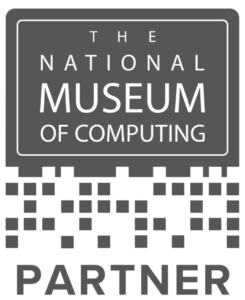With our growing dependency on IT, we need to start delivering services in the way that our customers really want them.
I was recently shopping in a store, something that I don’t enjoy doing. Whilst waiting in the long line the announcement echoed over the store intercom that sales were temporarily suspended due to a computer failure. Now, instead of abandoning my trolley and leaving the store, I thought that I would wait this one out and see how IT and the business interacted to resolve the problem. As I watched, the store manager worked on the phone with the ‘help desk’ to isolate and remediate the problem. The triage and resolution took for what seemed hours but actually was only a matter of minutes.
Especially interesting to me during this entire incident was the reinforcement that technology was a single point of failure in the company’s business process and the assumption that ‘IT’ will always be on and will work.
After the shop had reverted to business as usual, I asked the manager why his staff couldn’t simply use calculators to process the customers’ orders. He explained that it was company policy to suspend transactions in these circumstances due to the total interconnectivity of inventory systems, differing tax rates and so on for which the staff had not been appropriately trained.
For me this was a stark reminder of the growing dependency on technology that we all face in our lives, a situation reinforced by a number of changes:
- Mobility – no longer a fad but business as usual.
Smartphones and tablets are everywhere; just look around you at the moment. Today, enterprise applications are being delivered in ‘fit for purpose’ apps on mobile devices, threatening to make desktops and even laptops irrelevant. Think for a moment about the growing number of virtual stores where cameras on smartphones are used to scan barcodes, and then the associated app interfaces with the inventory system, processing orders and credit card transactions and emailing receipts. This represents only the beginning. Apps will proliferate and even be integrated into a constructed business process that can be developed within the organisation by a business analyst. Mobility is no longer a ‘fad’, it’s the norm. - Complexity across the service value chain
IT services are becoming increasingly complex. This is partly due to the way that third parties are used for selected functions, while older technology retained at the heart of the organisation is required to do unnatural acts! This added complexity makes it more difficult and expensive to address issues with these services, which means that IT must become more proactive. This can be achieved with the integration of IT infrastructure tools that monitor all aspects of the service topography, including partner interfaces, and then aggregate the outputs of these tools – metrics, alerts, etc. – related to the services. The goal is to understand potential performance issues or failures and to deal with them before they recur or become a problem. - Self-resolution – the norm
I, like many others, regularly network with my virtual peers and community to seek answers to questions. My daughter-in-law, for example, was recently trying to resolve a problem with some software she used for her work. Instead of calling the service desk, she posted a question on Facebook and the community pointed her to an update to the software application and she self-provisioned the solution, without any interaction with the IT organisation.Today we trawl the internet for great travel deals and book our travel online. Only a decade ago we used a travel agent. Now, if there are problems with our reservations, we can resolve them quickly on our own, instead of having to queue or contact a service desk. Today, if my plane is cancelled, I am notified almost instantly of my new arrangements on my wireless device and I only need to call if I am not satisfied. The airline is acting proactively, not waiting to react when the phone rings.Self-resolution is clearly becoming the norm and will become more pervasive.
- Automate everything
IT organisations must focus on the automation of service creation, delivery, resolution and escalation. This is not just to provide better customer service; forward-thinking organisations are automating in order to make resources available for value-added activities such as building new services or proactive problem management.It is not enough, though, just to automate the IT process. We must ensure that relevant audit checkpoints are maintained and automated restoration is available in case of failure. Automation is critical! - Deliver services, not resolve incidents
The accelerated business cadence is all about delivering service to the organisation’s customers with speed, quality and differentiation; but to achieve this requires more than automation and slick technology.The service desk team must also transition. The team must shed the image of waiting for the phone to ring, documenting and passing the issue to the next step in the chain. The team must focus on building and delivering in order to increase both their real and perceived value within the organisation; otherwise they will quickly become irrelevant.Many people tell me that service management is dead. Not true! What is true is that the role of service management is evolving – from one of support to one of focus on delivery and proactivity. With our growing dependency on IT, we have a challenge and an opportunity to add even greater value to the business in the months ahead.
Are you up for the challenge

Robert Stroud
A recognized industry thought leader, speaker and contributor to multiple best practices and standards, consistently thinking "outside-the-box" to communicate and drive business transformation for organizations globally. Currently leading the research on DevOps to fuel Business Transformation delivering industry-leading research leveraged by organizations globally.


